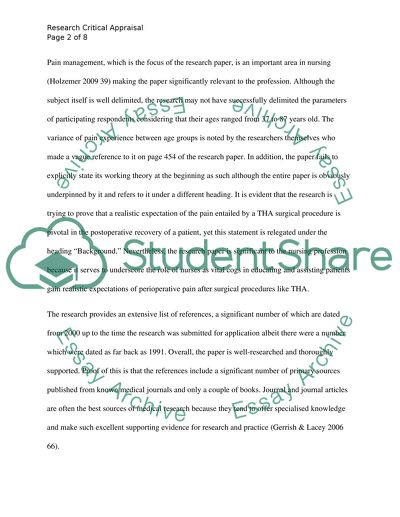Cite this document
(Patient Undergoing Total Hip Arthroplasty: A Perioperative Pain Experience Research Proposal Example | Topics and Well Written Essays - 1500 words, n.d.)
Patient Undergoing Total Hip Arthroplasty: A Perioperative Pain Experience Research Proposal Example | Topics and Well Written Essays - 1500 words. https://studentshare.org/health-sciences-medicine/1568618-resarch-critical-appraisal
Patient Undergoing Total Hip Arthroplasty: A Perioperative Pain Experience Research Proposal Example | Topics and Well Written Essays - 1500 words. https://studentshare.org/health-sciences-medicine/1568618-resarch-critical-appraisal
(Patient Undergoing Total Hip Arthroplasty: A Perioperative Pain Experience Research Proposal Example | Topics and Well Written Essays - 1500 Words)
Patient Undergoing Total Hip Arthroplasty: A Perioperative Pain Experience Research Proposal Example | Topics and Well Written Essays - 1500 Words. https://studentshare.org/health-sciences-medicine/1568618-resarch-critical-appraisal.
Patient Undergoing Total Hip Arthroplasty: A Perioperative Pain Experience Research Proposal Example | Topics and Well Written Essays - 1500 Words. https://studentshare.org/health-sciences-medicine/1568618-resarch-critical-appraisal.
“Patient Undergoing Total Hip Arthroplasty: A Perioperative Pain Experience Research Proposal Example | Topics and Well Written Essays - 1500 Words”. https://studentshare.org/health-sciences-medicine/1568618-resarch-critical-appraisal.


